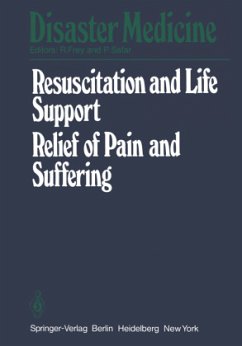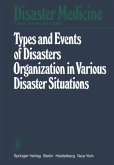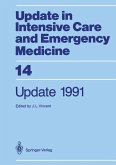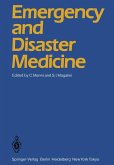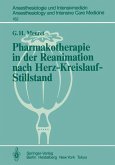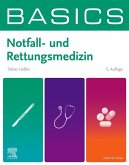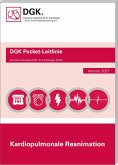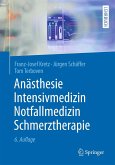Resuscitation and Life Support in Disasters, Relief of Pain and Suffering in Disaster Situations
Proceedings of the International Congress on Disaster Medicine, Mainz, 1977, Part II
Herausgegeben von Frey, R.; Safar, P.
Resuscitation and Life Support in Disasters, Relief of Pain and Suffering in Disaster Situations
Proceedings of the International Congress on Disaster Medicine, Mainz, 1977, Part II
Herausgegeben von Frey, R.; Safar, P.
- Broschiertes Buch
- Merkliste
- Auf die Merkliste
- Bewerten Bewerten
- Teilen
- Produkt teilen
- Produkterinnerung
- Produkterinnerung
The Police Emergency Unit concept for our Community has proven to be unique and highly practical. Highly skilled teams of college trained, physician- supervised Police Offi cers render emergency care for trauma and illness with remarkable expertise. The roving, constantly on duty concept has distinct merits. It does provide a low cost system to en sure the delivery of emergency medical care to a community with a minimum of confu sion and a maximum of efficiency. Special acknowledgement is noted herewith for Mrs. Candace Otte, R. N. , Dr. Frede rick A. Doornbos, Dr. Ramon B. Lang, Dr. Lee R.…mehr
Andere Kunden interessierten sich auch für
![Types and Events of Disasters Organization in Various Disaster Situations Types and Events of Disasters Organization in Various Disaster Situations]() Types and Events of Disasters Organization in Various Disaster Situations81,99 €
Types and Events of Disasters Organization in Various Disaster Situations81,99 €![Update 1991 Update 1991]() Update 199182,99 €
Update 199182,99 €![Emergency and Disaster Medicine Emergency and Disaster Medicine]() Emergency and Disaster Medicine121,99 €
Emergency and Disaster Medicine121,99 €![Pharmakotherapie in der Reanimation nach Herz-Kreislauf-Stillstand Pharmakotherapie in der Reanimation nach Herz-Kreislauf-Stillstand]() G. MeuretPharmakotherapie in der Reanimation nach Herz-Kreislauf-Stillstand54,99 €
G. MeuretPharmakotherapie in der Reanimation nach Herz-Kreislauf-Stillstand54,99 €![BASICS Notfall- und Rettungsmedizin BASICS Notfall- und Rettungsmedizin]() Tobias HelfenBASICS Notfall- und Rettungsmedizin29,00 €
Tobias HelfenBASICS Notfall- und Rettungsmedizin29,00 €![Kardiopulmonale Reanimation Kardiopulmonale Reanimation]() Kardiopulmonale Reanimation12,50 €
Kardiopulmonale Reanimation12,50 €![Anästhesie, Intensivmedizin, Notfallmedizin, Schmerztherapie Anästhesie, Intensivmedizin, Notfallmedizin, Schmerztherapie]() Franz-Josef KretzAnästhesie, Intensivmedizin, Notfallmedizin, Schmerztherapie64,99 €
Franz-Josef KretzAnästhesie, Intensivmedizin, Notfallmedizin, Schmerztherapie64,99 €-
-
-
The Police Emergency Unit concept for our Community has proven to be unique and highly practical. Highly skilled teams of college trained, physician- supervised Police Offi cers render emergency care for trauma and illness with remarkable expertise. The roving, constantly on duty concept has distinct merits. It does provide a low cost system to en sure the delivery of emergency medical care to a community with a minimum of confu sion and a maximum of efficiency. Special acknowledgement is noted herewith for Mrs. Candace Otte, R. N. , Dr. Frede rick A. Doornbos, Dr. Ramon B. Lang, Dr. Lee R. Pool, Dr. John R. Wilson, and P. Rode rick Smithson, the E. M. T. County Coordinator. Emergency Unit Calls for Metropolitan Grand Rapids and Kent County Grand Rapids (2 Units E-1 and E-2) January 1973 thru December 1973 P. 1. Accidents 1237 Cardiac 410 Disregarded 76 Others 805 D. O. A. 's 114 Code K's 30 Total: 2672 Average Per Day 7. 3 Kent County (3 Units E-66, E-67, E-68) August 1973 thru April 1974 P. I. Accidents 553 Cardiac 202 Disregarded Others 241 Not Applicable D. O. A. 's l3 Code K's 3 Total: 1017 Average Per Day 4. 1 Wyoming (1 Unit E-50) February 18, 1974 thru May 8, 1974 P. I. Accidents 57 Cardiac 50 Disregarded Others 135 Not Applicable D. O. A. 's Code K's Total: 242 Average Per Day 3. 0 Kentwood (1 Unit E-35) P. I.
Hinweis: Dieser Artikel kann nur an eine deutsche Lieferadresse ausgeliefert werden.
Hinweis: Dieser Artikel kann nur an eine deutsche Lieferadresse ausgeliefert werden.
Produktdetails
- Produktdetails
- Disaster Medicine .2
- Verlag: Springer / Springer Berlin Heidelberg / Springer, Berlin
- Artikelnr. des Verlages: 978-3-540-09044-1
- 1980.
- Seitenzahl: 304
- Erscheinungstermin: 1. September 1980
- Englisch
- Abmessung: 244mm x 170mm x 17mm
- Gewicht: 570g
- ISBN-13: 9783540090441
- ISBN-10: 3540090444
- Artikelnr.: 36111894
- Herstellerkennzeichnung Die Herstellerinformationen sind derzeit nicht verfügbar.
- Disaster Medicine .2
- Verlag: Springer / Springer Berlin Heidelberg / Springer, Berlin
- Artikelnr. des Verlages: 978-3-540-09044-1
- 1980.
- Seitenzahl: 304
- Erscheinungstermin: 1. September 1980
- Englisch
- Abmessung: 244mm x 170mm x 17mm
- Gewicht: 570g
- ISBN-13: 9783540090441
- ISBN-10: 3540090444
- Artikelnr.: 36111894
- Herstellerkennzeichnung Die Herstellerinformationen sind derzeit nicht verfügbar.
Preface to the Series.- List of Authors.- Resuscitation and Life Support in Disasters.- Stages of Resuscitation and Life Support in Disasters.- Teaching Life Saving First Aid to the Population at Large.- Extended Rescue Action by Members of Rescue Organisations.- Education of Medical Students in Emergency Medical Services (Disaster Medicine) in Sweden and Norway.- Unexpected Results from an Evalution of Basic Life Support Training.- Indwelling Central Venous Catheters for the Critically 111 Patients.- A Combined Oxygen Resuscitator, Analgesic and Anaesthetic Machine for Use in Disaster Situations.- Requirements for Manually Operated Resuscitators for Use in Disaster Situations.- ECG Telemetry Transmitter, a Vital Tool for Emergency Medical Technicians in Rescue Line.- Use of Modified Liquid Gelatins in Transfusions - in France.- The Possibilities, Requirements and Usefulness of an Immediate Prophylaxis as well as of the Treatment of Traumatic Shock in the Field.- Volemic Re-equilibration with Noncolloidal Isotonic Solutions Under Everyday and Natural Disaster Circumstances.- Possibilities of Oral Fluid Substitution Under Disaster Conditions.- Potential Time Economy in Resuscitation During Disasters by Use of Low Energy, Direct Current, First Shock in Human Cross Chest Ventricular Defibrillation.- Changes in Lipid Metabolism Following Bum Injuries - Consideration of Therapeutic Measures.- 2. Relief of Pain and Suffering in Disaster Situations.- Relief of Pain and Suffering in Disaster Situations.- Requirements for Medicinal Pain Control and Sedation in Disaster Situations.- Techniques of Administration of Nitrous Oxide/Oxygen Mixtures in the Emergency Situation.- Analgesia in Mass Accidents.- Total Spinal Block for Sequelae After Head and Neck Injuries.- AnalgesicOnset Time of IV Butorphanol in Postsurgical Patients.- Assessment and Anesthesia for Multiple Trauma Patients.- The 'Tri-Service' Anaesthetic and Resuscitation System.- Anaesthesia for Battle Casualties in Nigeria.- The Use of Ketamine Hydrochloride for Relief of Pain and Suffering in Disaster Situations.- Regional Anesthesia for Disaster Situations.- General and Local Anaesthesia in Disaster Situations.- Anesthesia Procedures for Disaster Cases in Medicine.- Hypnosis as Emergency Treatment for the Mentally 111 and in Disaster Situations.- 3. Workshops: 3.1 Resuscitation.- Experience of Four Repatriation Flights.- The Doctor's Dilemma - When not to Resuscitate.- Pancommunity Impact of Basic and Advanced Cardiac Life Support Upon Coronary Death Rate.- A Medical Rescue Team for Motor Racing Events.- The Possibilities of Developing Simulators for Lifesaving Measures.- The Training of Medical Students in Emergency Medicine and Disaster Management.- Hyperbaric Chamber for Sport Diving Accidents.- Evaluation of Emergency Medical Services System in the United States.- International Activities in the Emergency Medical Services Project.- Emergency Medical Services (EMS) Systems in the United States, Progress Report and Program Projections.- A Systems Approach to Emergency Medical Care.- Evaluation of Fresh Isolated Craniocerebral Traumas Immediately After Hospitalization.- Mobile Intensive Care Unit as a Catastrophe Unit.- Levels of Urgency for Surgical Treatment in Case of Disaster.- Advanced Life Support by Paramedics.- Planning and Developing a Community Hospital Disaster Program.- Basic and Advanced Life Support in the Water, Lifesaving Chain of the Bulgarian Red Cross.- Resuscitation Research and Evaluation in Disaster Medicine.- Life Support Education: fromPhysician Specialists to Lay Public.- Tri-Service System for Anaesthesia and Resuscitation.- Training Program of the Rescue Services - Forefront of Disaster Aid.- Proposals for Color and Symbol Coding of Equipment, Instruments and Medications.- Grand Rapids Police. Emergency Medical Technician Program.- Emergency Medical Care: a Police System.- Organization of Emergency Cardiac Care in London, Ontario, Canada.- Nasopharyngeal Tube.- Requirements for Aspiration Apparatus Used Under Disaster Conditions.- 3.2. Intravenous Fluids.- Recommendations for the Standardization of Infusion Therapy and Parenteral Nutrition in Disaster Situations.- Indication for Blood, Blood Derivatives, and Colloidal Plasma Expanders in Disaster Situations (J. Kilian and A. Ganzoni).- Initial Infusion Therapy in Bum Casualties Under Disaster Conditions.- Supraclavicular Puncture and Catheterization Using the Alpha System.- 3.3 Relief of Pain and Suffering.- Textiles in the Light of Anesthesia.- Problems of Anesthesia and Resuscitation of the Victims of the Bulgarian Earthquake.- Gammahydroxybutyric Acid - It Effect on Serum Enzymes and Energy Metabolism During Anesthesia.- The Value of Ketamine in Emergency Cases.- Clinical Experience with an Intravenous Combination Anesthesia and Respiration with an AMBU Bag.- Entonox in Immediate Care.- Evaluation of New Combination Anesthesias for Disaster Situations.- Experience of Ketamine and Diazepam Anaesthesia in Field Hospital Conditions.- Postoperative Pain Relief: in a Developing Country.- 3.4 Free Topics.- EMS and its Role in Disaster Medicine.- WHO's Role in Emergency Relief Operations.- Development of a Government Organized Emergency Health Services System in British Columbia.- Summary of the Congress Recommendations by the Session andWorkshop Chairmen.- Conclusion of Congress.
Preface to the Series.- List of Authors.- Resuscitation and Life Support in Disasters.- Stages of Resuscitation and Life Support in Disasters.- Teaching Life Saving First Aid to the Population at Large.- Extended Rescue Action by Members of Rescue Organisations.- Education of Medical Students in Emergency Medical Services (Disaster Medicine) in Sweden and Norway.- Unexpected Results from an Evalution of Basic Life Support Training.- Indwelling Central Venous Catheters for the Critically 111 Patients.- A Combined Oxygen Resuscitator, Analgesic and Anaesthetic Machine for Use in Disaster Situations.- Requirements for Manually Operated Resuscitators for Use in Disaster Situations.- ECG Telemetry Transmitter, a Vital Tool for Emergency Medical Technicians in Rescue Line.- Use of Modified Liquid Gelatins in Transfusions - in France.- The Possibilities, Requirements and Usefulness of an Immediate Prophylaxis as well as of the Treatment of Traumatic Shock in the Field.- Volemic Re-equilibration with Noncolloidal Isotonic Solutions Under Everyday and Natural Disaster Circumstances.- Possibilities of Oral Fluid Substitution Under Disaster Conditions.- Potential Time Economy in Resuscitation During Disasters by Use of Low Energy, Direct Current, First Shock in Human Cross Chest Ventricular Defibrillation.- Changes in Lipid Metabolism Following Bum Injuries - Consideration of Therapeutic Measures.- 2. Relief of Pain and Suffering in Disaster Situations.- Relief of Pain and Suffering in Disaster Situations.- Requirements for Medicinal Pain Control and Sedation in Disaster Situations.- Techniques of Administration of Nitrous Oxide/Oxygen Mixtures in the Emergency Situation.- Analgesia in Mass Accidents.- Total Spinal Block for Sequelae After Head and Neck Injuries.- AnalgesicOnset Time of IV Butorphanol in Postsurgical Patients.- Assessment and Anesthesia for Multiple Trauma Patients.- The 'Tri-Service' Anaesthetic and Resuscitation System.- Anaesthesia for Battle Casualties in Nigeria.- The Use of Ketamine Hydrochloride for Relief of Pain and Suffering in Disaster Situations.- Regional Anesthesia for Disaster Situations.- General and Local Anaesthesia in Disaster Situations.- Anesthesia Procedures for Disaster Cases in Medicine.- Hypnosis as Emergency Treatment for the Mentally 111 and in Disaster Situations.- 3. Workshops: 3.1 Resuscitation.- Experience of Four Repatriation Flights.- The Doctor's Dilemma - When not to Resuscitate.- Pancommunity Impact of Basic and Advanced Cardiac Life Support Upon Coronary Death Rate.- A Medical Rescue Team for Motor Racing Events.- The Possibilities of Developing Simulators for Lifesaving Measures.- The Training of Medical Students in Emergency Medicine and Disaster Management.- Hyperbaric Chamber for Sport Diving Accidents.- Evaluation of Emergency Medical Services System in the United States.- International Activities in the Emergency Medical Services Project.- Emergency Medical Services (EMS) Systems in the United States, Progress Report and Program Projections.- A Systems Approach to Emergency Medical Care.- Evaluation of Fresh Isolated Craniocerebral Traumas Immediately After Hospitalization.- Mobile Intensive Care Unit as a Catastrophe Unit.- Levels of Urgency for Surgical Treatment in Case of Disaster.- Advanced Life Support by Paramedics.- Planning and Developing a Community Hospital Disaster Program.- Basic and Advanced Life Support in the Water, Lifesaving Chain of the Bulgarian Red Cross.- Resuscitation Research and Evaluation in Disaster Medicine.- Life Support Education: fromPhysician Specialists to Lay Public.- Tri-Service System for Anaesthesia and Resuscitation.- Training Program of the Rescue Services - Forefront of Disaster Aid.- Proposals for Color and Symbol Coding of Equipment, Instruments and Medications.- Grand Rapids Police. Emergency Medical Technician Program.- Emergency Medical Care: a Police System.- Organization of Emergency Cardiac Care in London, Ontario, Canada.- Nasopharyngeal Tube.- Requirements for Aspiration Apparatus Used Under Disaster Conditions.- 3.2. Intravenous Fluids.- Recommendations for the Standardization of Infusion Therapy and Parenteral Nutrition in Disaster Situations.- Indication for Blood, Blood Derivatives, and Colloidal Plasma Expanders in Disaster Situations (J. Kilian and A. Ganzoni).- Initial Infusion Therapy in Bum Casualties Under Disaster Conditions.- Supraclavicular Puncture and Catheterization Using the Alpha System.- 3.3 Relief of Pain and Suffering.- Textiles in the Light of Anesthesia.- Problems of Anesthesia and Resuscitation of the Victims of the Bulgarian Earthquake.- Gammahydroxybutyric Acid - It Effect on Serum Enzymes and Energy Metabolism During Anesthesia.- The Value of Ketamine in Emergency Cases.- Clinical Experience with an Intravenous Combination Anesthesia and Respiration with an AMBU Bag.- Entonox in Immediate Care.- Evaluation of New Combination Anesthesias for Disaster Situations.- Experience of Ketamine and Diazepam Anaesthesia in Field Hospital Conditions.- Postoperative Pain Relief: in a Developing Country.- 3.4 Free Topics.- EMS and its Role in Disaster Medicine.- WHO's Role in Emergency Relief Operations.- Development of a Government Organized Emergency Health Services System in British Columbia.- Summary of the Congress Recommendations by the Session andWorkshop Chairmen.- Conclusion of Congress.

